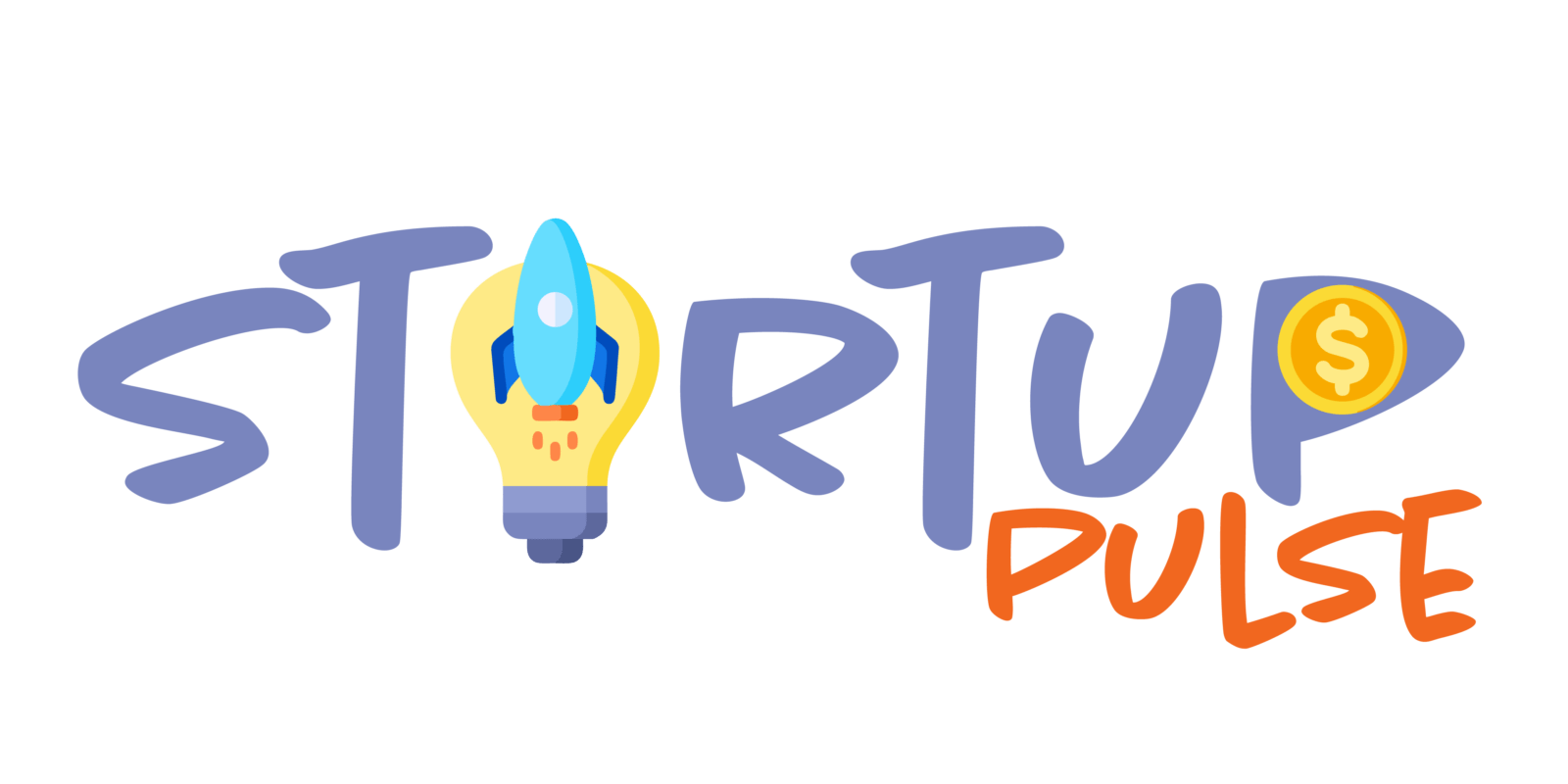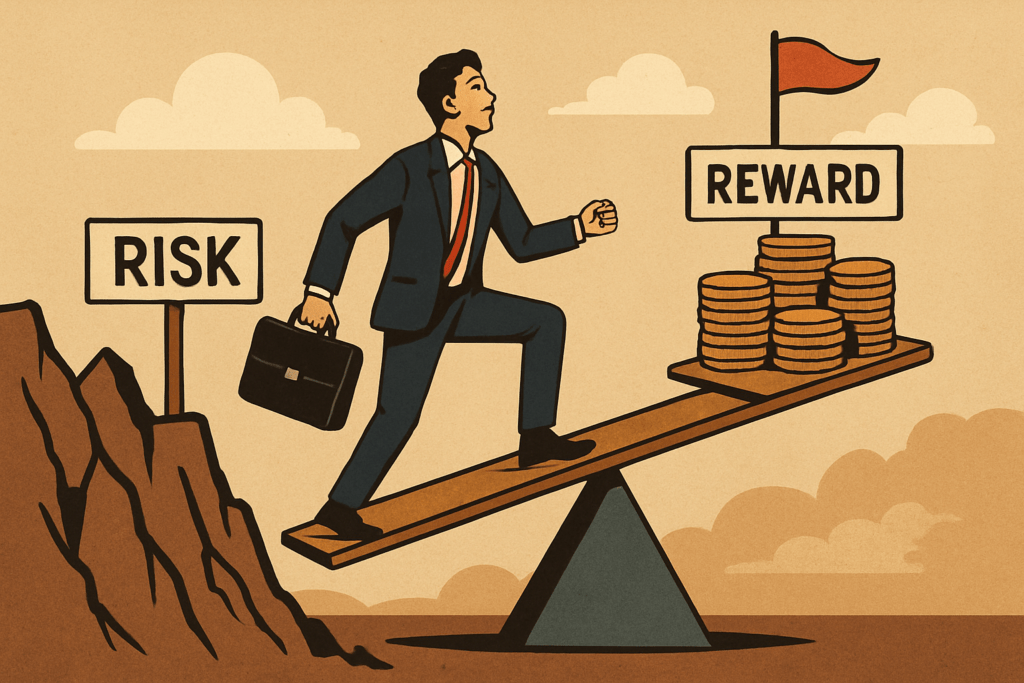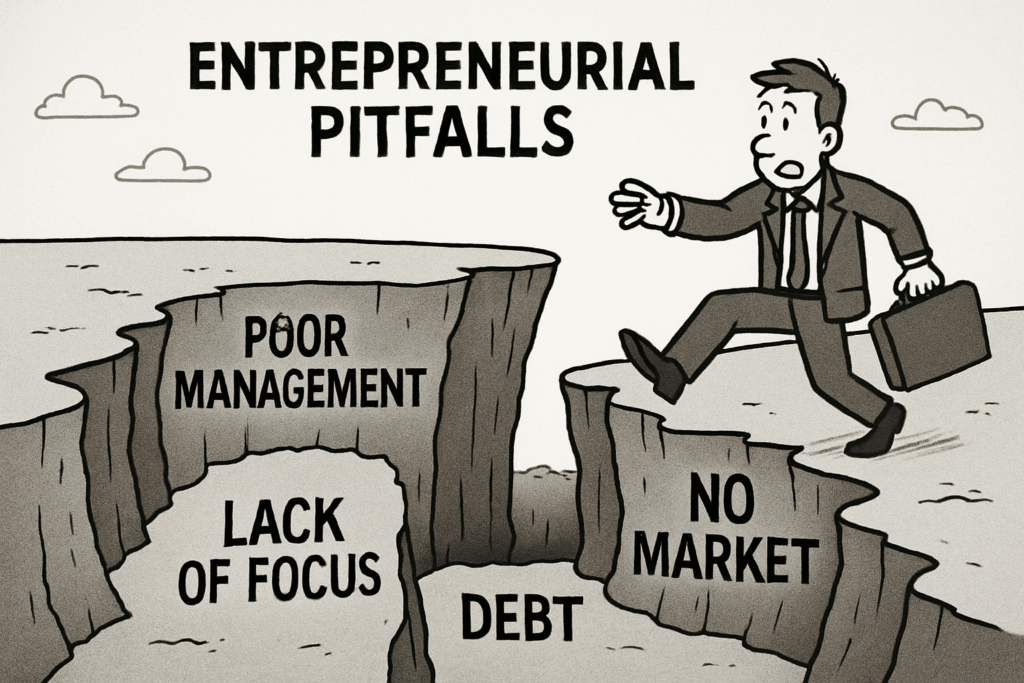The Art of Balancing Risk and Reward in Entrepreneurship
- Open with what keeps founders up at night: bold ideas vs. business realities.
- Clean intro to the struggle: stakes are high, but so is the potential payoff.
- Main keyword focus: risk and reward entrepreneurship.
- Set the stage: what’s different about risk for startups, and why balance is an asset.
The Art of Balancing Risk and Reward in Entrepreneurship
What keeps founders lying awake at night isn’t just the buzz of a big idea—it’s the icy awareness of everything on the line: livelihoods, investments, pride. The lure of entrepreneurship is potent because possibility stretches wide, but the tightrope between risk and reward entrepreneurship never loosens. One side whispers: “Be bold. The next unicorn started with wild thinking.” The other coldly responds: “Business realities don’t care about dreams.”
Here’s the heart of the struggle, and it isn’t poetic—it’s practical. Startups operate with stakes cranked to eleven. The carrot? Outsize returns, personal fulfillment, world-changing impact. The stick? The yawning chasm of failure, often sudden and absolute. Large companies navigate with rules, reserves, and long runways. For startups, it’s sprinting at the edge—risk our time, our money, our reputations—in exchange for a shot at something meaningful, maybe even monumental.
Balancing risk and reward is not about bold versus cautious; it’s a continuous calibration. Stepping too softly means missing out, drifting with every breeze of hesitation. Pushing too hard, too soon, and you might flame out before your product leaves beta. The edge is sharp, but that’s also where opportunity lives. For founders, risk isn’t just a necessary evil—it’s an asset. Balanced right, it keeps you inventive without being reckless, calculated without becoming paralyzed. And that’s the art of staying awake for the right reasons.
Understanding Risk: It’s Not All Gamble
Risk gets a bad rap in entrepreneurship—like it’s all roulette wheels and YOLO bets. It’s not. There are flavors: financial risk (can you make payroll?), market risk (will anyone even care?), product risk (does this thing actually work?), and team risk (can the people you hired survive the storm?). These aren’t blind leaps; they’re calculated jumps with eyes open.
Forget the myth of the fearless founder. The best entrepreneurs aren’t adrenaline junkies chasing the next thrill. They scan the terrain, gather intel, and do the math. Calculated risk-taking is woven into startup DNA. It means knowing how much you can lose, what you stand to gain, and what fallback you have if things go sideways.
Here’s the new reality: with faster-moving markets and more eyes on every move, today’s founders have to weigh risks sharper than ever. One hasty decision—or worse, ignoring a risk—and the whole house of cards wobbles. Good founders know it’s not about avoiding risk, but taming it. They put thought before action, and that’s how they build companies that last.
Real-World Reward: What Makes It Worth It
Let’s get this straight: reward in entrepreneurship isn’t only about fat profit margins or a unicorn valuation. Sure, money talks—sometimes loudly—but the real haul is broader, deeper, quieter. Founders who last find satisfaction in owning their schedule, in creating something with their name on it, or knowing their ideas break the status quo. Autonomy, legacy, innovation, and even a shot at a saner work-life equation all count as meaningful wins. Chasing cash alone is a fast track to burnout or boredom.
Smart founders set their sights on reward optimization. That means balancing short-term gains with the stamina to keep going year after year. It’s about building processes and a culture that outlive any single product pivot or hype cycle. They get clear on what “success” actually means: is it growth you can manage, a tight-knit team, customer love, or just getting to school pickup on time? Each is legit, but you need to know your own scoreboard.
How do you measure reward? Look beyond the checkbook. Are you growing—not just your revenue, but also your people and skills? Are you satisfied more days than not? If your project gets sideswiped tomorrow, does the foundation allow you to regroup and rebuild? That’s future-proofing, and it’s as real a payoff as any quarterly bonus. In risk and reward entrepreneurship, defining the “prize” clearly—and checking in often—isn’t an afterthought. It’s your best edge.
Modern Startup Strategies: Taking Smart Risks
Entrepreneurship isn’t poker night—smart founders play a tighter hand. Yet, the table stakes are high and standing still is rarely an option. Winning in today’s startup scene means blending data and instinct: spreadsheets weigh potential, gut checks sense timing.
Think minimum viable product (MVP): it’s not just buzz, it’s your insurance policy. Roll out the basics, watch for user reactions, and shift course if the winds change. Smart startups pivot often, and fast. Don’t cling to a sinking ship when data (or customers) say abandon. MVPs aren’t about being safe—they’re about controlling exposure on the path to actual demand.
Responsive risk management isn’t just for product. Take team structure: remote or hybrid models are everywhere now. The payoff? Lower overhead, bigger talent pool, flexible hustle. But don’t gloss over the risks: communication cracks, culture drift, fuzzy accountability. The sharp founder studies what’s working—like the evolution of startup culture—and applies it, not blindly but with intent.
The real play: never go all-in without knowing your downside. Smart risks are calculated, responsive, and never rigid. In the end, balancing risk and reward in entrepreneurship means learning to love feedback—whether it comes from customers, metrics, or that uneasy feeling telling you to look twice before leaping.
Classic Mistakes: When the Balance Tips
Here’s where things get ugly. Whether it’s your first rodeo or your fifth, classic mistakes in balancing risk and reward have a nasty habit of sneaking up on founders.
Let’s start with overconfidence. It feels great—until it doesn’t. Think you’ve got product–market fit nailed because five friends said “cool app”? The graveyard of dead startups is full of people who bet the farm on vibes instead of data. Chasing trends is another killer. Fidget spinners, NFTs—the list of shiny objects is long. Blink, and the “Next Big Thing” becomes yesterday’s news while your runway disappears.
Ignoring team risk? That’s a slow-motion train wreck. You can’t scale if everyone’s quietly burning out or bailing because they feel like cogs rather than partners. Case in point: remember when big, buzzy companies blew up due to “visionary” founders treating people like afterthoughts? None ended well.
Reward-blindness is subtler but just as dangerous. If the only win you’re tracking is how much funding you raised or how many users you stacked up, you’re missing out. Ignore personal satisfaction and team health—you’ll likely end up rich, tired, and alone (if you get rich at all).
Anecdote time: Once, a fintech startup tossed everything behind a feature that seemed clever but nobody wanted. The founder was certain—convinced, unshakable. Six months later, they scrapped it. What did it cost? Half the company’s cash and a third of its team, gone. The fix could have been simple: ask “Would I bet the house on this?” Or even, “Does my team want to?”
So, here’s your practical gut-check: Before you go all-in, pause. Would you bet your apartment, your relationships, your sleep on this move—or is it just ego talking? Get honest, get input. Risk is a moving target, and balancing it is an everyday job, not a one-time move.
Sharpening Your Balance: Practical Guidelines
Let’s be real—balancing risk and reward in entrepreneurship isn’t some once-a-year activity. It’s an everyday discipline, almost like brushing your teeth or checking your bank balance. Smart founders lean on a few dead-simple frameworks to avoid letting either risk or reward get out of hand.
Start with the risk ladder. Map your decisions from low to high stakes, then tackle them accordingly. Don’t waste hours sweating over a $50 decision—save the heavy analysis for the big bets. If you’re more of a visual thinker, a classic SWOT analysis (strengths, weaknesses, opportunities, threats) keeps you honest when you’re tempted to ignore warning signs or get blinded by opportunity. It isn’t corporate mumbo-jumbo—it works because it’s simple.
Scenario planning is your fallback when things go sideways. Imagine your best, worst, and most likely outcomes for a move. If the worst keeps you up at night or could tank the company, you’re staring down too much risk. Think, would you bet your own house on it?
Don’t ignore what big companies get right: risk logs (literally just a running list of “what could go wrong” with owner and actions) and quick, honest post-mortems after every launch, pivot, or flop. Write down—and talk about—what worked and what didn’t, even if it stings a bit. This builds pattern recognition over time. Patterns = fewer repeat mistakes.
Keep your reward goals in plain sight—on the whiteboard, on your phone, wherever. And yes, keep them flexible. The thing you were chasing last year might not matter after your first brutal pivot.
Finally, there’s team trust. If nobody on your crew feels comfortable flagging a red flag, you’re operating blind. Regular, open discussions about risk—and not just when things go wrong—sharpen everyone’s judgment and help avoid lopsided calls.
In short: risk–reward balance isn’t a guessing game or a gut feeling—it’s a repeatable, practical process you can work at, every day, with your whole team in the loop.
Keep Learning: Great Resources for Founders
If “risk and reward entrepreneurship” is your game, staying sharp is a non-negotiable. The best founders are always learning—they know no win or loss is worth much if it just sits in the rearview. So, carve out a standing slot in your week for a solid podcast (founders swear by “How I Built This”), scan Twitter/X for raw lessons from startup veterans, and don’t skip the fireside chats at industry events—you’ll catch what’s really going on when the cameras swing away.
Books? Try The Lean Startup by Eric Ries for practical tough love, or dive into The Hard Thing About Hard Things by Ben Horowitz for unvarnished war stories. If you want a broader, research-backed take, check out this resource from HBR. Forums like Indie Hackers, Y Combinator’s Hacker News, and (yes) Reddit’s r/startups still serve up useful suffering—and a few solid gold tips—for navigating the chaos.
Bottom line: however you do it, keep collecting playbooks. And don’t just read—apply. Half of balancing risk and reward is letting the wisdom of others sharpen your own decision-making instincts.
Conclusion: Risk as a Muscle, Reward as a Compass
Here’s the truth—balancing risk and reward in entrepreneurship isn’t a stunt you perfect and forget. It’s a muscle to work, every day. The real winners don’t avoid risk or chase every shiny reward; they train themselves to recognize, weigh, and adapt. You won’t always get it right. Sometimes, the market moves faster than you do. Sometimes, a calculated risk flops. But every round in the ring makes you stronger.
Don’t mistake balance for hesitation. Smart founders make bold moves, but with eyes open and goals in clear view. If you keep sharpening your sense of risk and checking your reward compass—autonomy, impact, growth—your startup won’t just survive. It stands a shot at defining its own odds.
So keep flexing that risk muscle, stay sharp about what rewards matter to you, and remember: the point isn’t to play it safe. It’s to play smart. Every tough call, every near miss, every small win is a rep that gets you closer to where you want your venture to go.




